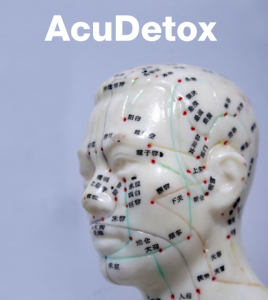
Dr. Vache is a private practitioner specializing in integrative adult psychiatry, addiction medicine, and transcranial magnetic stimulation.
“They come in saying, I’m so nervous, I’m so nervous, I’m so nervous, but as soon as you treat them the group – they’re so calm — it gives me chills.”
That’s David Schrieber, LCSW, explaining his experience in administering acupuncture to clients in residential treatment at the Hicks Family Ranch in Buda. He and another AR counselor went to a workshop at the Academy of Oriental Medicine in Austin last year and, under the tutelage of Claudia Voyles, LCSW, took up the age-old practice of acupuncture for a very modern purpose.
Every Tuesday morning David, Claudia, and AOMA students treat 8 to 15 clients, inserting 5 acupuncture needles in each ear and leaving them in place for 15 minutes. Not everybody is comfortable with the idea, but once treated most clients return for more sessions. The idea is to manage PAWS, or post-acute withdrawal symptoms, an uncomfortable syndrome of anxiety and sleeplessness which can really distract clients in early recovery.
David’s goal is to provide the service even more often – three days a week. AcuDetox is provided at no additional cost to AR clients – something that would cost $40-60 per session in an acupuncture office. AR has provided it in earlier years and we are glad it’s back in our program. Even after years of positive research into its effectiveness however, it is still not well known or widely available. Just one more thing that makes AR so valuable in this community.
I first encountered acupuncture detox when I was in medical school and spent the summer of 1975 studying at the Haight-Ashbury Free Medical. The clinic adopted it soon after an acupuncturist in Hong Kong, Wen Hsaing-Leu, found that acupuncture points in the ear used for anesthesia also relieved symptoms of opium withdrawal. Research on 40 heroin and opium addicts appeared in Asian Journal of Medicine in 1973 and clinics in New York City and San Francisco adopted the practice. Since then we Westerners have adopted other Asian disciplines such as mindfulness and yoga as important supports to the work we do.
“We don’t claim it’s a cure for drug addiction. If we can treat the withdrawal symptoms, make the patient more comfortable, and alleviate their suffering, then we have achieved something. Our treatment is not the complete answer to drug addiction.” – Wen
